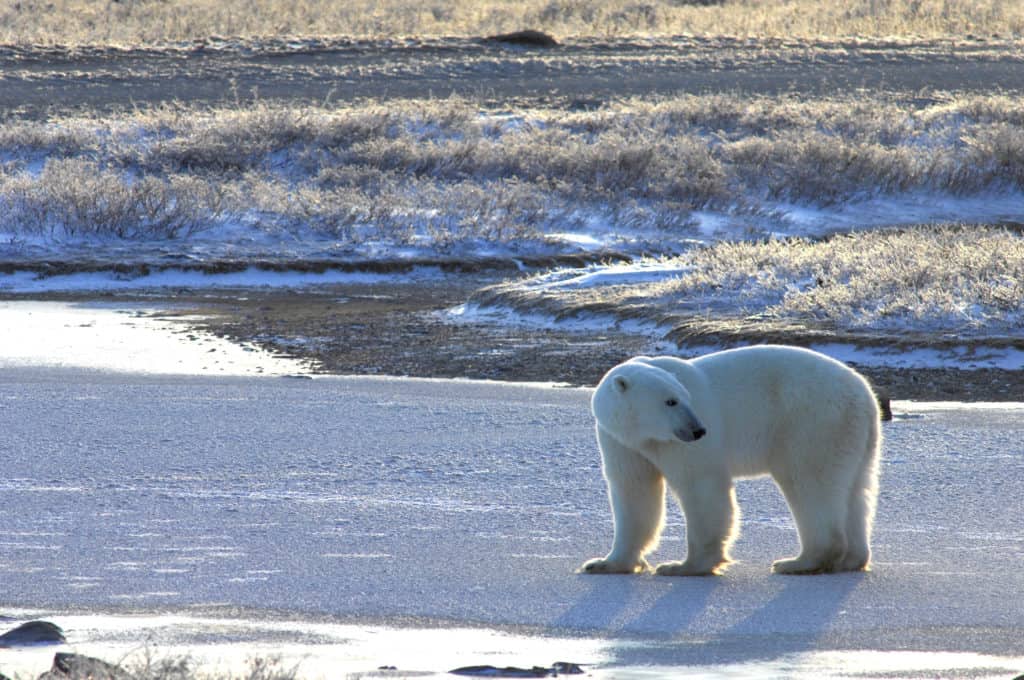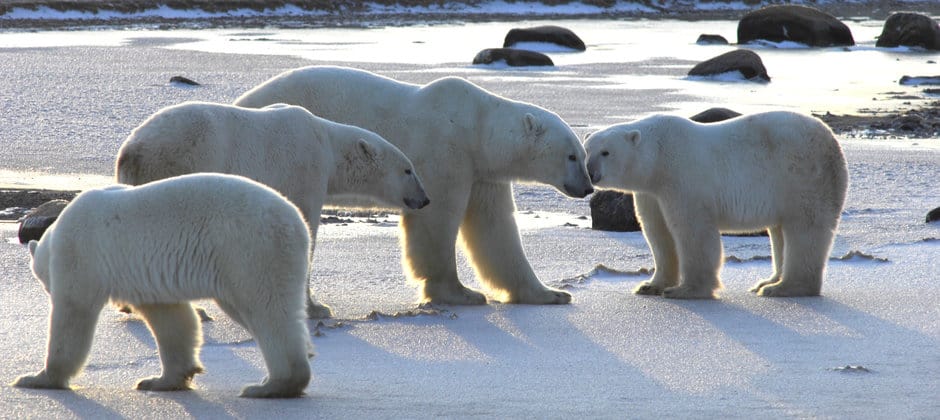Share this article
Warmer climate stresses polar bears
Polar bears that have been tracked for decades in Western Hudson Bay have increased stress levels in years with the warming climate, a new study shows.
This research adds to a large body of evidence showing that climate change affects the lives and biology of the largest carnivores in North America.
“You see really strong differences between the good and the poor years,” said Rudy Boonstra, an ecology and physiology professor at the University of Toronto Scarborough and the lead author of a study published recently in Global Change Biology. “It’s really quite remarkable.”
Previous research has found that increasingly short periods of full ice cover in western Hudson Bay affects the ecology of polar bears (Ursus maritimus). The bears rely on seals that they hunt on the ice for much of their yearly diet. The key period is in late spring when baby seals are born. Baby seals are critical to bears putting on weight, and allow them to sustain the long fast ahead. But climate change shortens this key period. As a result, bears are thinner when they leave the ice and must spend more time on land, occasionally subsidizing their diets with goose eggs or other land-based foods. Shorter ice seasons can mean smaller cub litters, based on research conducted recently on Baffin Island bears.
Boonstra and his co-authors wanted to track the impact of variable weather on polar bears. They analyzed 300 blood samples collected between 1983 and 2015 from polar bears that were anesthetized. Researchers had recorded data on sex, age, fat index and whether or not the females had cubs at the time.

Polar bears have evolved a degree of resistance to the negative effects of stress, but climate change may push them past their ability to cope. Credit: Andrew Derocher
The weather patterns tracked in western Hudson Bay in Canada over this period showed that polar bears there had about seven good years, up until 1990, followed by a number of subsequent bad years in which the spring melt happened too early.
Boonstra and his colleagues found that the key protective protein that buffers the bears from the stress hormone cortisol were much higher in the years where there was less freeze time on the bay, and they remained higher in subsequent years.
Climate seems to provide “a pretty strong signal for levels of stress” in the bears, said Andrew Derocher, a biology professor at the University of Alberta in Edmonton and a co-author on the study. But since other factors could affect stress levels year by year, such as chemical contaminants or conflict with humans, the team hasn’t yet found the “smoking gun,” he said.
The researchers also found something interesting about polar bear physiology in the course of their study. While elevated, long-term stress can cause problems for most species, including humans, polar bears have adapted an ability respond in a way that no other mammal does to help them tolerate these higher stress hormone levels.
This is possibly due to the natural fasting periods that bears face even in years with long sea ice periods. The large predators typically don’t eat much during the summer, while pregnant females can go up to eight months without feeding. The bears have also previously experienced long periods of changing climate, such as the end of the last ice age.
“They’re the most highly advanced bear species we’ve got,” Boonstra said. “They’re utterly astounding.”
While polar bears may be “consummate fasters,” Derocher said, there is a limit to how long they can go without eating. As climate change continues to affect their environment and feeding habits, he said, polar bears may not be able to keep up.
Boonstra adds that everything researchers know indicates the bears will not be able to keep up.
Header Image: Polar bears in western Hudson Bay show increased stress as the climate warms. Credit: Andrew Derocher








